Thomas Wright Clock
The Goldrush of the 1850’s attracted thousands of immigrants from Asia and Europe who came to “try their luck” and find personal fortunes. Amongst their numbers arrived several British and German silversmiths, clockmakers and watchmakers who brought with them a long tradition of metalcraft. Geelong attracted many of these craftsmen setting up trade in the centre of the township. Thomas Wright was one of leading watchmakers in Geelong who oversaw the Town Clock. Unfortunately, very few examples of his work have survived.
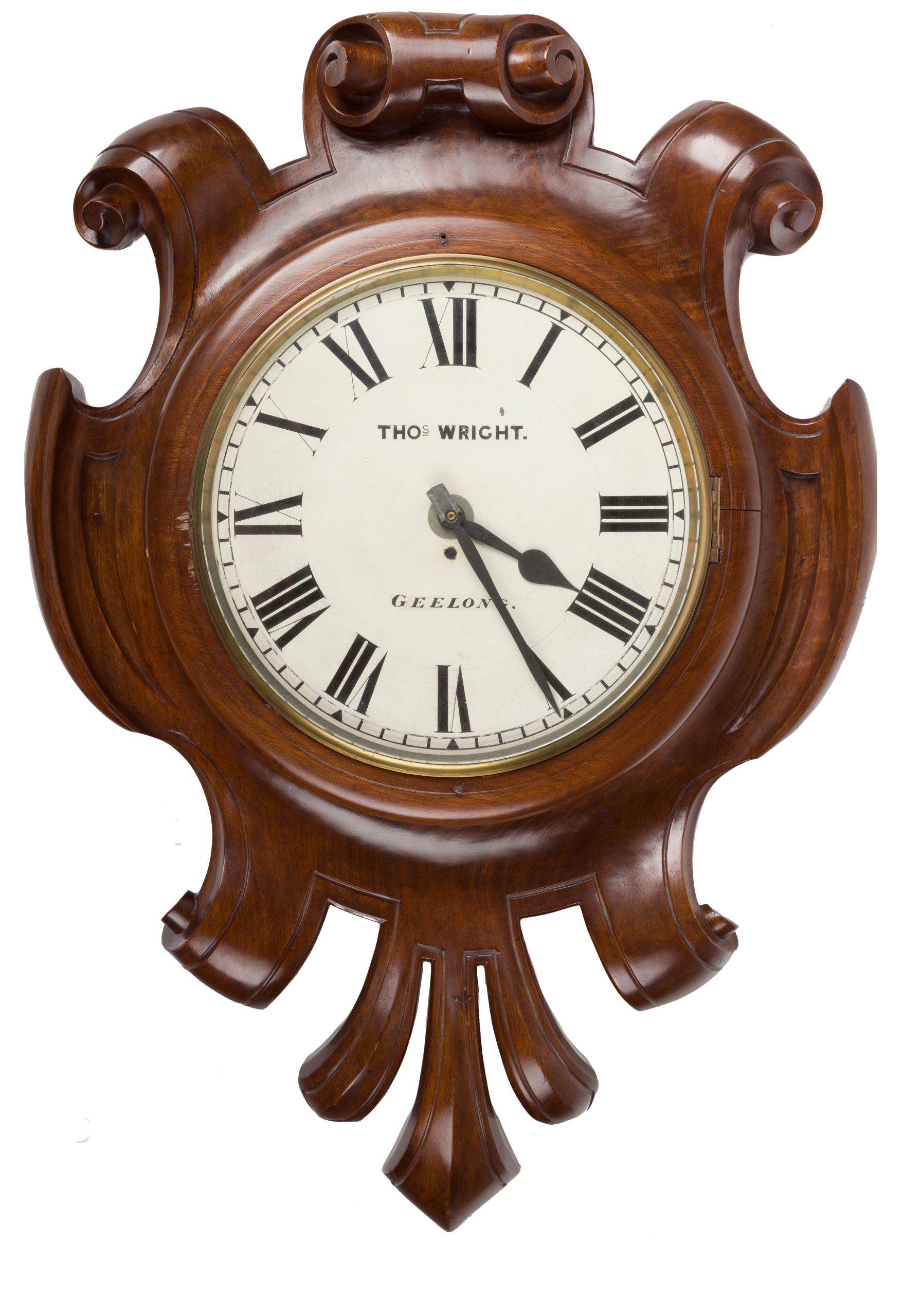
Parking Signs
These parking street signs from the 1960s are very diffrent to their modern-day counterparts. They spell out their entire messages whereas modern equivalents use only a few letters and numbers to display the same message. Made from yellow and black painted steel, these signs are heavy but easy to read.
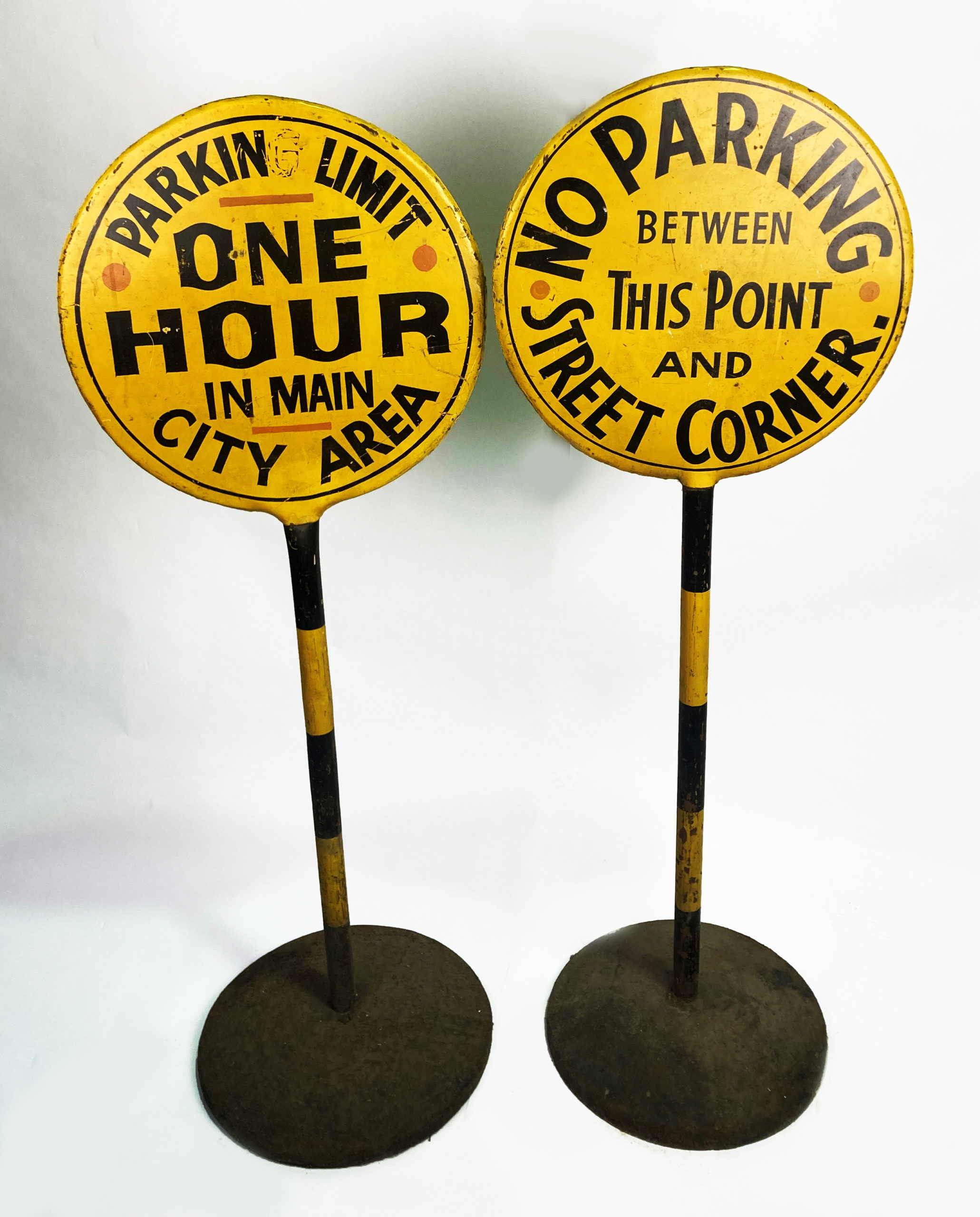
Cleaning Cart
This street sweeping cart was used on Pakington Street before the amalgamations of six local councils to form the City of Greater Geelong. The cart is from around 1960 when the City of Geelong West had approximately 17,500 people within its borough. The cart was wheeled up and down the popular street; cleaning litter and providing a clean and pleasant street for locals and shop owners alike.
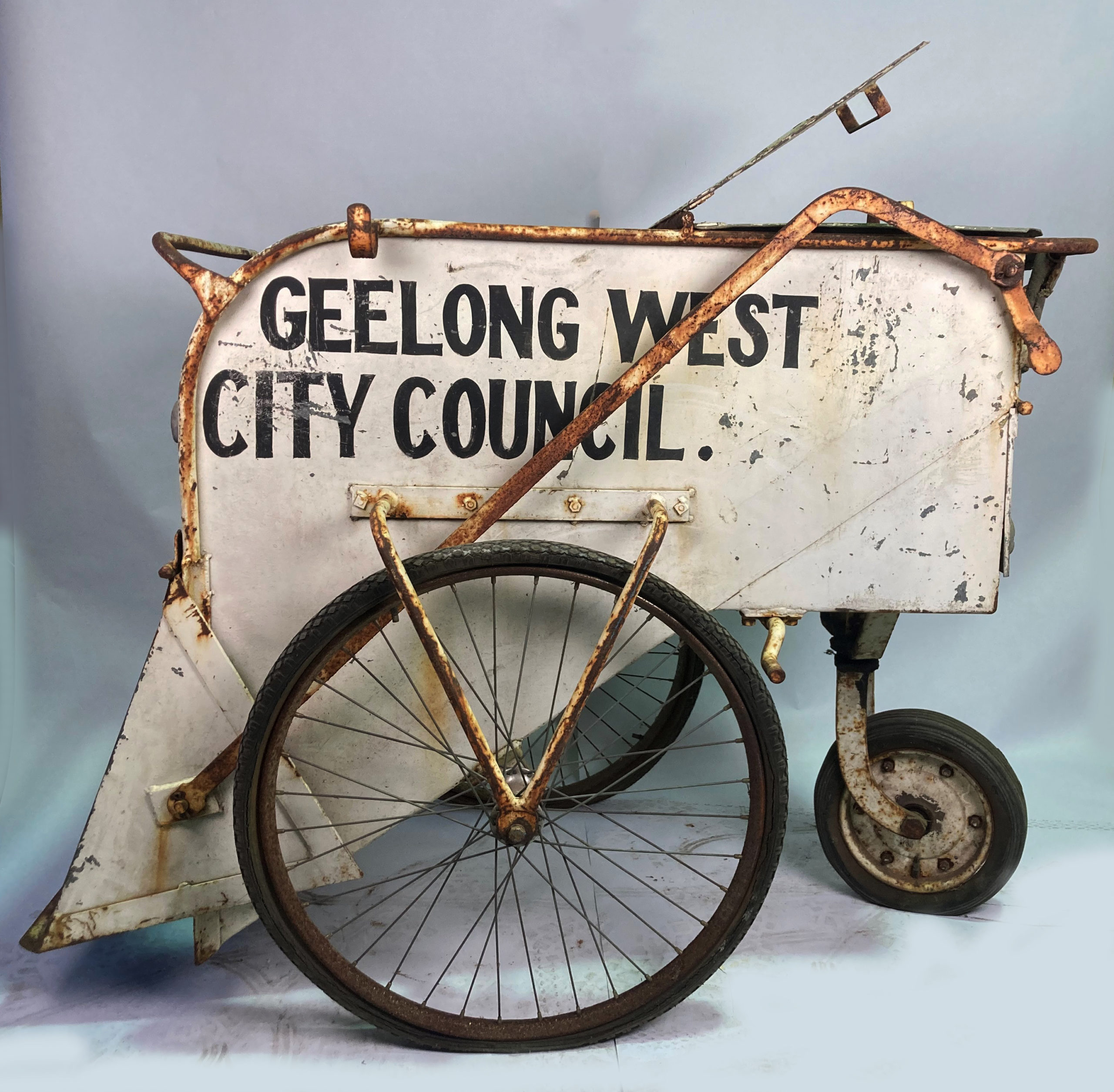
Stained Glass Window
This stained glass was originally installed at Geelong Town Hall following its expansion in 1917. The Geelong Council involved the staff and former students of the Gordon Technical College in designing the artwork and aesthetic of the building. Arthur S. Pittock, former student and local glazier, was responsible for the design and construction of the large stained glass window in the stair hall. The window was described as “a special feature” in the new building with the leaded glass work using “the motif throughout in Greek form, of admirable colour”. The window showcases the City of Geelong’s original coat of arms, featuring images of Geelong’s early industries: sailing, wool, wine and wheat production, and a kangaroo as an inescutcheon.
During the redevelopment of City Hall in the late 1960s the stained glass window was removed from the building and placed in the basement carpark. The National Wool Museum has taken responsibility of the window and removed it from the carpark to be conserved and housed safely.
The surviving City Hall window is the most elaborate, known surviving stained glass window by Pittock.
Watch the full story of the Stained Glass Window at https://vimeo.com/466047641
Clock of the Edina
The SS Edina was one of the longest running steam vessels anywhere in the world. Built in 1853, it was used in the Mediterranean during the Crimean War, carried cotton for the Confederate states during the American Civil War and ended its days on Port Phillip Bay, over a century later, making the trip between Geelong and Melbourne. It was only recently relocated during the work for the Our Heritage, Our Collection project.
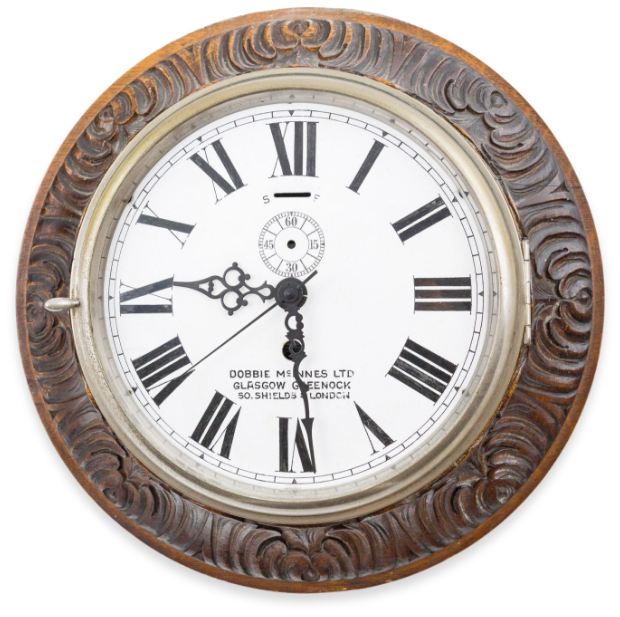
Cameron Dirk
Beautifully ornamented and engraved Scottish military dirk dating from the 1790s, presented to Comunn Na Feinne Society Geelong in the 1850s and passed on to Newtown Council during their reinvigoration of the Highland Gathering.
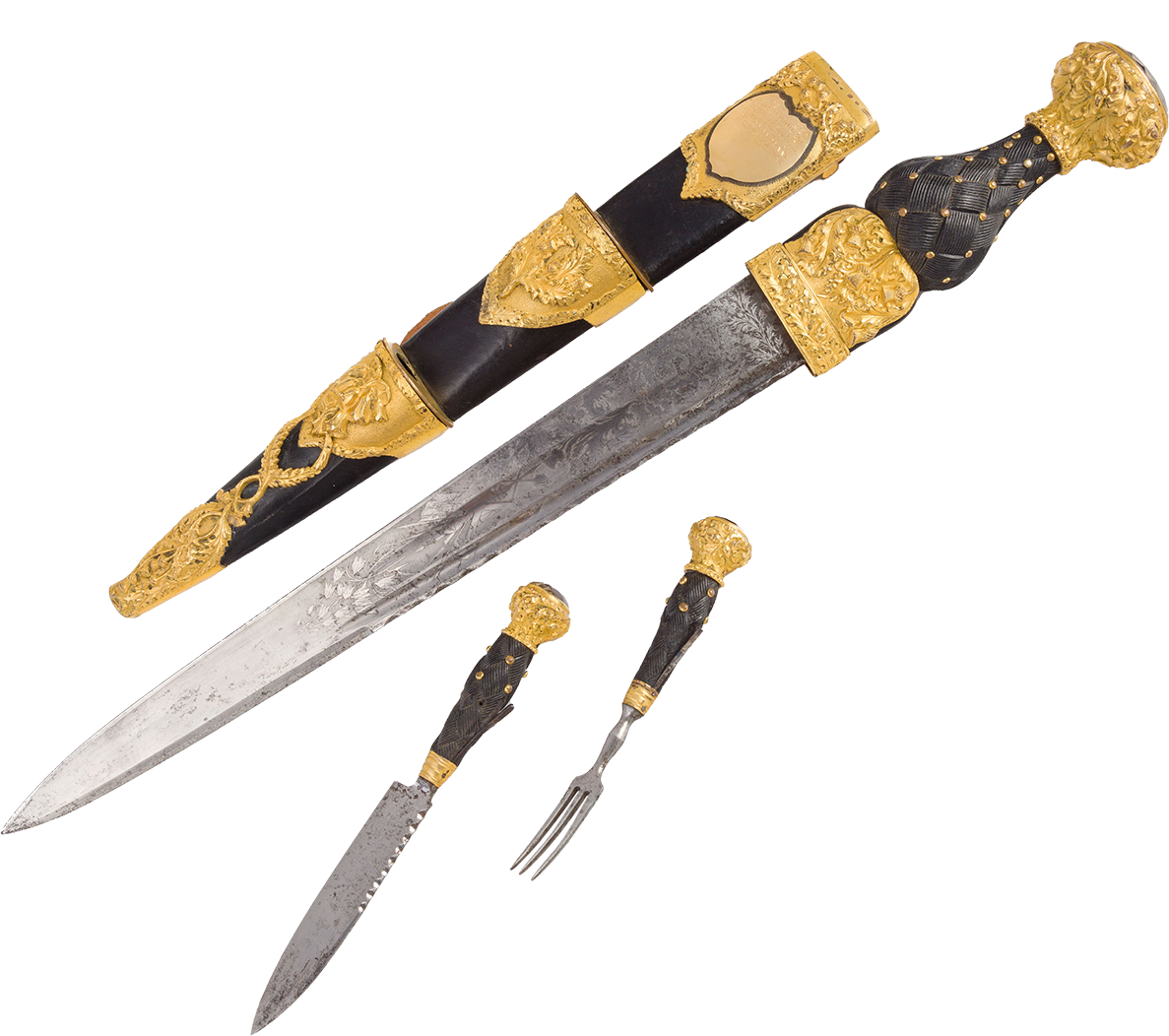
Geelong Council Mayorial Chair
Ornate timber ceremonial chair featuring a carving of the Geelong coat of arms c1860. Until recently the chair was in the foyer of City Hall, it is now held in safe keeping at the Geelong Heritage Centre.
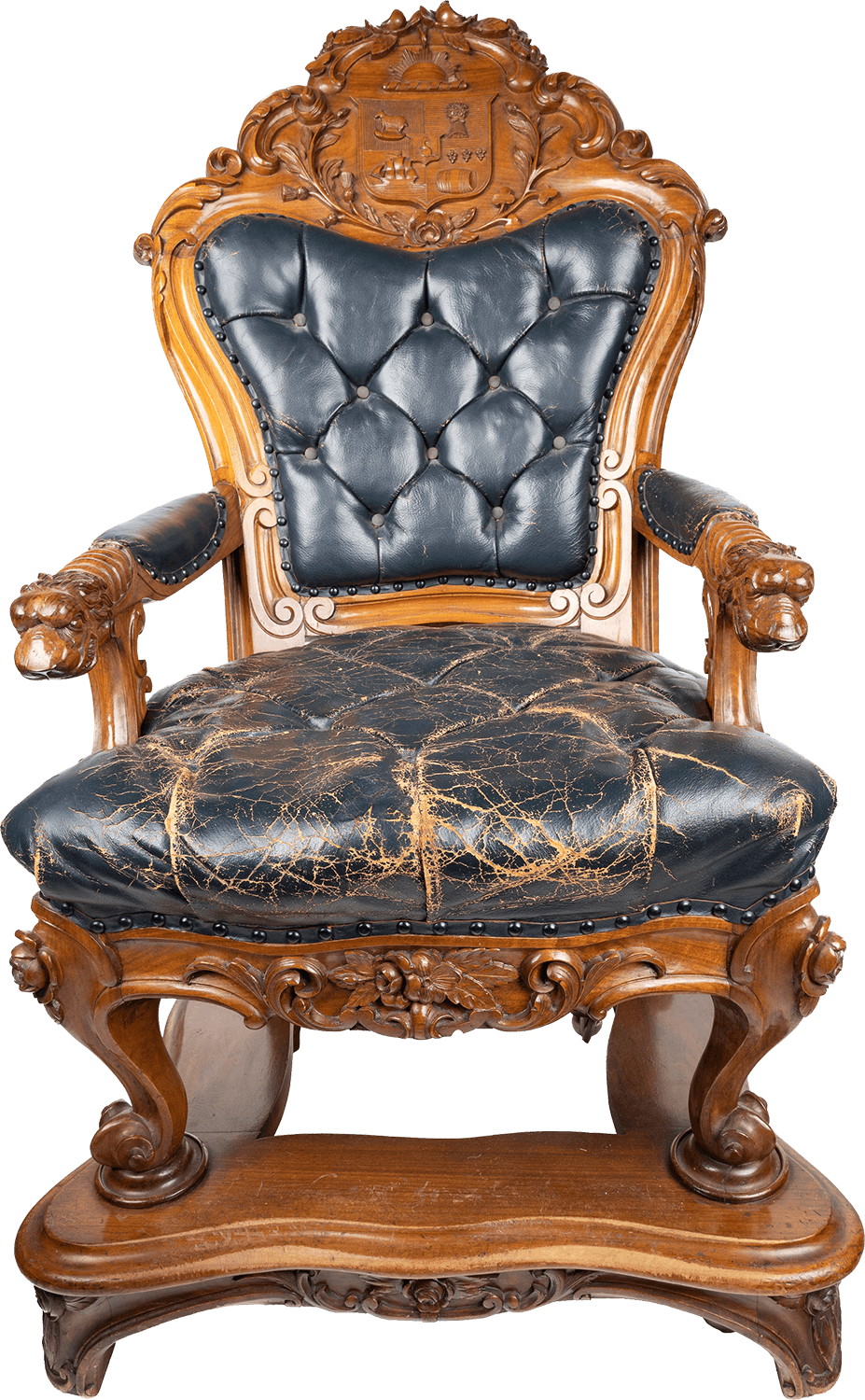
View of Geelong
by Edward Snell
After migrating to Australia from England and working on the goldfields Snell settled in Geelong. Soon after arriving in Geelong, he painted this scene of the emerging city. He made his fortune as an engineer for the Geelong and Melbourne Railway. This painting was presented to Geelong Council in 1941. Photo courtesy Geelong Heritage Centre.
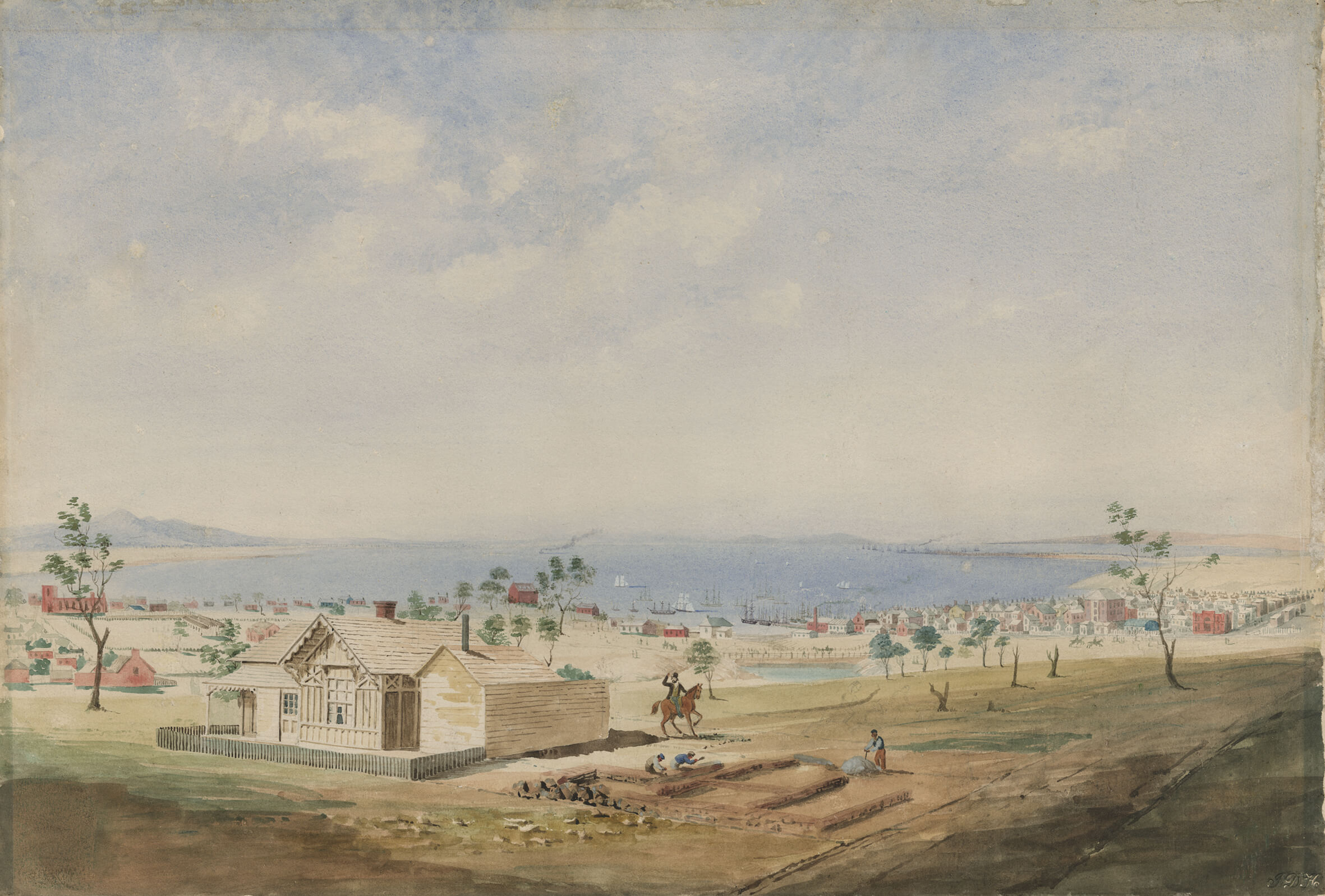
View of City Hall
Originally constructed in 1855, based on plans by architect Joseph Reed, the building remained with only a single southern wing until the turn of the century. In 1914 a referendum was held to decide whether to move town hall to another site on Moorabool Street (the former Geelong Grammar site). This was defeated. By 1917 the eastern and northern wings of the building were completed. This image was taken soon after the completion of the building.
